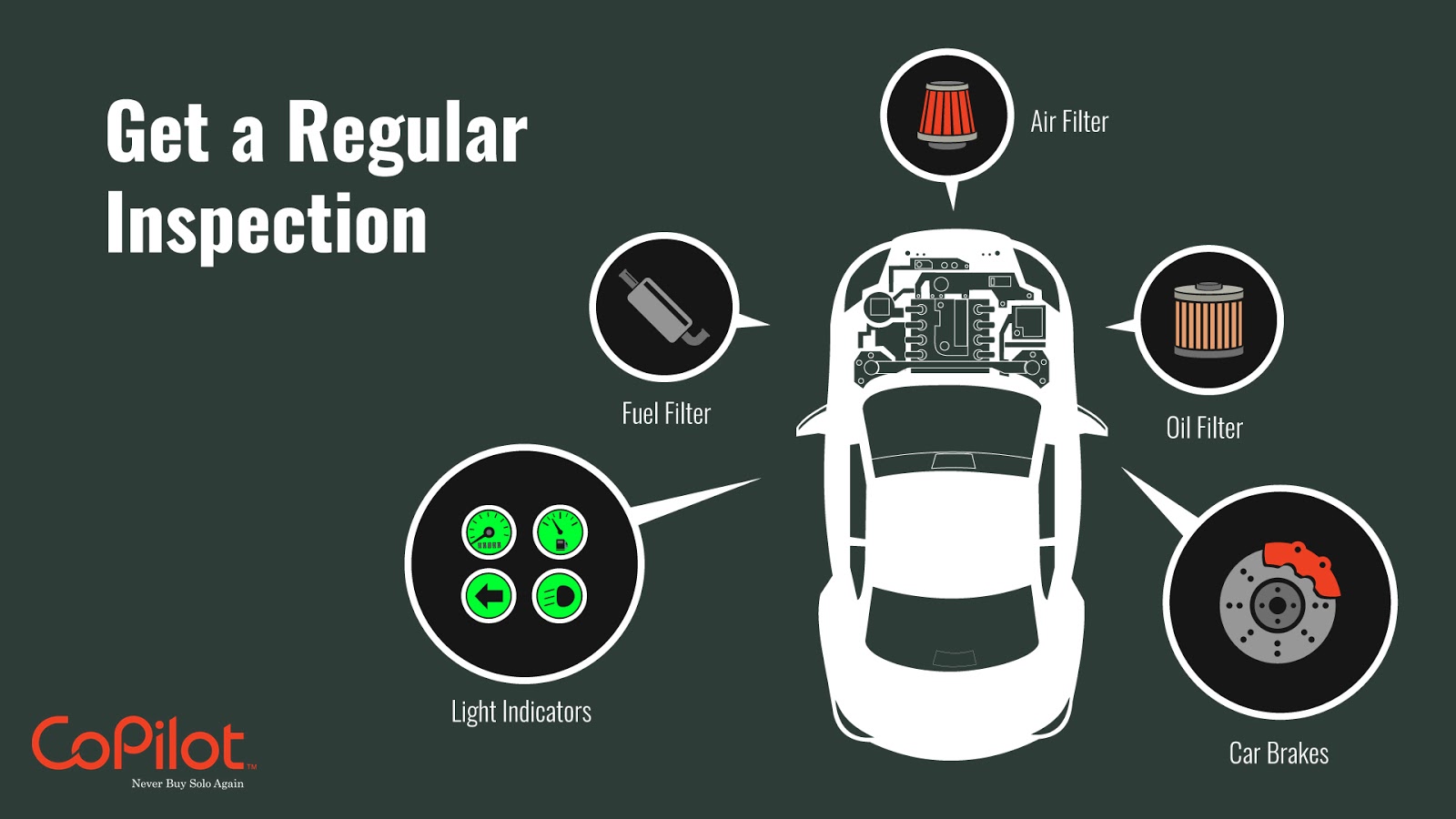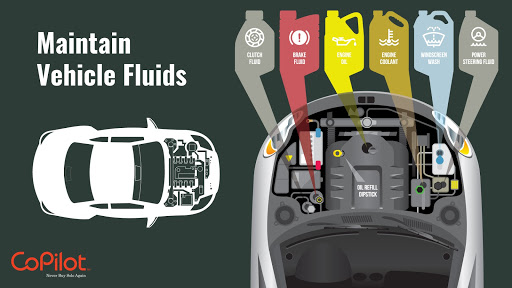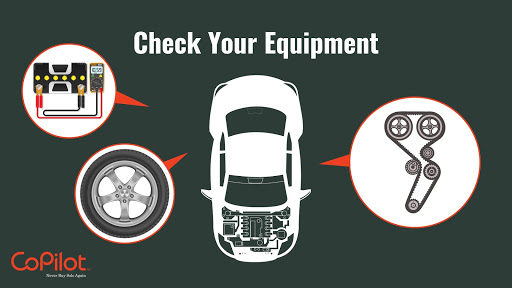4 Basic Car Maintenance Tips All Owners Should Know

Cars are an essential part of our everyday.
We drive them to work, to visit our family and friends, and attend fun events on the weekend.
But how often do you maintain your car? And do you know what to look out for?
Car maintenance is crucial to road safety, and there’s nothing more important than keeping yourself and your loved ones safe on the road.
In this guide, we’re going to help you become a more informed driver by showing you four basic car maintenance tips that every car owner should be familiar with.
#1. Get a Regular Inspection
Regular car maintenance inspections are a necessary component of owning a car.
Inspections will help you understand which parts are aging, which need repairing, and how quickly you need to do so.
Inspections ensure there are no major problems that could result in safety or performance issues.
Here are a few things we recommend you learn and understand.

#1. Oil Change and Oil Filter Replacement
Oil is the lifeblood of every car, so a regular oil change and oil filter replacement is a must!
As the engine runs, tiny impurities like metal, carbon, and dirt, can pass through the oil filter and end up in the oil, causing wear and tear on your engine.
Most mechanics (and car manufacturers) recommend you change your engine oil every 5,000-10,000 miles.
You also need to change your oil filters, as dirty or clogged filters increase the chances of contaminants dirtying-up your fuel. Get a fresh oil filter every time you change your oil.
#2. The Air Filter
A dirty air filter will make it more difficult for your engine to “breathe.” You should change air filters every 15,000 to 30,000 miles.
#3. The Fuel Filter
Just like the oil filter, fuel filters sieve particles from the fuel prior to that fuel going into the engine. It’s a good practice to change your fuel filter often every 30,000 miles.
#4. Understanding Your Light Indicators
While new models can detect faults, it’s up to you to interpret these signs on-time.
The check engine light could be an indication of a simple issue (like a faulty gas cap), or something more severe, like misfiring an engine. When it comes to an electrical fault light, the light indicates a fault with your car engine. If these lights are on, you should get your car checked immediately.
#2. Check Your Battery and Breaks
#1. Car Battery
The heart of every car is its battery.
Every vehicle needs a battery to start its engine, as the battery provides the zap of electricity that powers your vehicle. While most batteries will last four to five years, factors like extreme temperatures and extended periods of non-use can drain and damage your battery more quickly.
Here are some general tips.

Make sure you’re using the recommended battery for your car model. You can confirm this on your car manufacturer’s website.
When your car is getting serviced, request for a battery check-up.
#2. Car Brakes
When it comes to brakes, a faulty braking system is dangerous for the driver and all passengers aboard. That’s why you want to make sure your brakes are in the right condition.
There are many components in the braking system: the brake rotor and brake shoes/pads, among others.
When the brake rotor comes together, it squeezes the brake pads towards the discs, bringing the car to a halt. Due to the intense heat caused by a lot of friction, the brake rotor will eventually wear out.
While a good set lasts up to 50,000 miles, you should still have them checked regularly.
#3. Maintain Vehicle Fluids
Your vehicle requires many fluids to keep it running. Maintaining fluids at healthy levels will reduce your maintenance costs. It’s also an inexpensive and straightforward part of vehicle maintenance that any driver can learn.

#1. Brake Fluid:
Brake fluid keeps the brakes fully functional. Sometimes when water contaminates the brake fluid, the water lowers its boiling point, and the liquid can turn into gas. This results in a squishy brake pedal. Make sure you replace your brake fluid every 20,000 to 45,000 miles.
#2. Transmission Fluid:
Low transmission fluid can result in burns to the transmission. Make sure you regularly inspect your transmission fluids. A healthy fluid will be pink and smell sweet, while a bad transmission fluid will appear brown or dark red and smell burnt. Change your transmission fluid every 30,000 to 60,000 miles.
#3. Coolant:
Your coolant goes into your radiator along with water to cool down the car engine and prevent overheating. Too little coolant and your engine will overheat. Make sure you replace the coolant every 60,000 miles.
#4. Power Steering Fluid:
Power steering fluid helps to keep the steering wheel lubricated. Low power steering fluid levels cause hard steering. Replace the power steering fluid at 75,000 miles, or when issues arise.
#5. Windshield Washer Fluid:
The fluid helps remove dirt obstructing your view off the windshield. Make sure you have enough fluid, especially on longer drives and road trips.
#4. Check your Equipment
There are parts in your vehicle you should always check so your car continues to run smoothly.
Apart from the oil, filters, vehicle fluids, and brakes, here are a few extra car parts you should monitor and regularly maintain.

#1. Hoses:
Hoses carry fluids like the coolant and power steering fluids. When the hoses age, they can crack and leak fluid. Make sure you have these hoses checked and changed, especially as your car approaches 100,000 miles.
#2. Spark Plugs and Ignition Check:
Bad plugs can cause your ignition system to fail. Your mechanic will need to do a scan of your car to know what exactly needs replacing.
#3. Timing Belt:
If your car uses a timing belt rather than a timing chain, you’ll need to change it between 75,000 and 90,000 miles, as belt failures can cause significant damage.
#4. Tires:
As a safety precaution, your tires need to have the right pressure, alignment and tread depth. Visit your local car technician to ensure your tires are safe to drive on, especially before road trips or before seasonal changes.
A tire which is safe in the spring may not be in the heat of summer or frigid temperatures of winter.
Conclusion
Your car’s condition matters.
Frequent vehicle maintenance equals safety, so keep it in the best condition.
Make sure you follow these four car maintenance tips and be observant about essential car parts, fluids, and features to maintain your vehicle in a top-notch, safe condition to drive. Read more on easy DIY car repairs.







